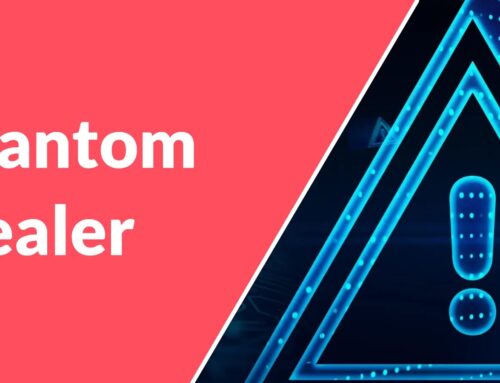
5 Email Attacks SOCs Cannot Detect Without A Sandbox
Despite the proliferation of collaboration tools like Slack and Microsoft Teams, email steadfastly remains the single most exploited attack vector for organizations globally. Its familiarity, inherent trust, and wide adoption make it an irresistible target for threat actors. A single, well-crafted email can bypass traditional perimeter defenses – including email filters, antivirus (AV) software, and even endpoint detection and response (EDR) solutions – enabling malicious payloads to establish a foothold or sensitive data to be exfiltrated without immediate detection. This article delves into five specific email attack methodologies that frequently evade detection by conventional security measures, highlighting why a robust sandbox environment is indispensable for modern Security Operations Centers (SOCs).
The Persistent Threat of Email
Email’s enduring appeal to attackers stems from its fundamental nature. It’s an asynchronous communication medium that relies on user interaction. Unlike network-based attacks that might trigger immediate anomalies, a seemingly legitimate email often requires a user to click a link, open an attachment, or reply to a request. This human element introduces a significant vulnerability, as even the most well-trained employees can be coerced or tricked into compromising security protocols. Traditional security tools are adept at identifying known signatures or large-scale behavioral anomalies. However, sophisticated email attacks are often low-volume, highly targeted, and leverage polymorphic characteristics to evade signature-based detection.
Why Traditional Defenses Fall Short
Email gateways, AV scanners, and EDR solutions form the bedrock of an organization’s defense-in-depth strategy. They are crucial for filtering out a vast majority of known threats. However, they operate on different principles:
- Email Gateways: Primarily focus on reputation, spam filtering, and basic malware signature matching against attachments and URLs. They may struggle with zero-day exploits or highly obfuscated payloads.
- Antivirus (AV) Software: Relies heavily on signature databases of known malware. Polymorphic threats or entirely new malicious binaries bypass this effectively. Heuristic analysis helps, but often requires a degree of execution or unusual behavior.
- Endpoint Detection and Response (EDR): Monitors endpoint activity for suspicious behavior and can detect post-compromise activities. While powerful, an EDR typically only sees activity once a malicious payload has landed and begun execution on an endpoint, which is often too late for proactive prevention.
This is precisely where a sandbox environment excels. A sandbox provides a safe, isolated space to detonate suspicious files, open questionable links, and observe their true behavior without risking the integrity of production systems. It watches what a file does, not just what it is.
5 Email Attacks That Bypass Conventional Defenses
1. Highly Obfuscated PowerShell or Script-Based Attacks
Attackers frequently embed malicious PowerShell scripts, JavaScript, or VBScript within attachments (e.g., seemingly innocuous Office documents or PDFs) or directly within the email body. These scripts are often heavily obfuscated using various techniques (e.g., encoding, string manipulation, variable renaming) to bypass static analysis performed by email gateways and AV solutions. Because the malicious code isn’t immediately recognizable, static scanners fail to flag it. Only by executing the script in a controlled environment can its true intent (e.g., downloading additional malware, establishing persistence, exfiltrating data) be revealed.
- Reference: While not a specific CVE, techniques like PowerShell obfuscation are commonly used in various attack campaigns. Consider the tactics outlined in MITRE ATT&CK T1059.001 (PowerShell).
2. Malicious HTML Smuggling
HTML smuggling is a technique where attackers embed a malicious payload directly within an HTML attachment or an HTML email body. When the user opens the HTML, the browser itself constructs the malicious file (e.g., a JavaScript file, an ISO image, or an executable) client-side. Since the malicious content is “smuggled” within the HTML and not directly present as a traditional attachment, email gateways often fail to detect it. The payload is not “downloaded” in the traditional sense until the HTML is rendered locally by the user’s browser, bypassing many network-based inspections.
- Reference: This technique gained prominence and evasion capabilities, often linked to campaigns deploying various malware strains. For instance, campaigns using HTML smuggling for QakBot or IcedID distribution are well-documented by various threat intelligence firms.
3. Zero-Day Exploits in Common Document Formats
A zero-day exploit targets a vulnerability in software that is unknown to the vendor and thus has no patch available. If an attacker discovers and weaponizes a zero-day vulnerability in, say, Microsoft Office or Adobe Reader, they can craft a malicious document (e.g., a .docx or .pdf file) that, when opened, executes arbitrary code. Since there are no existing signatures for the exploit, traditional AV and EDR solutions relying on known patterns will likely miss it. A sandbox dedicated to behavioral analysis would observe the abnormal process creation or memory manipulation triggered by the exploit, even if the specific vulnerability is unknown.
- Reference: While a specific CVE for an active zero-day is by definition unknown and unpatched during its exploitation, examples of past similar vulnerabilities include CVE-2022-30190 (Follina), which leveraged MS Diagnostic Tool (MSDT) vulnerabilities via Office documents.
4. Living Off The Land (LOTL) Attacks via Trusted Cloud Services
Attackers increasingly leverage legitimate, trusted cloud services (e.g., Google Drive, OneDrive, Dropbox, SharePoint) to host malicious files or phishing pages. An email might contain a link to a seemingly legitimate document or file hosted on one of these services. Traditional email filters trust these domains, and the content itself might appear benign until a user interacts with it or it triggers a secondary download. A sandboxed environment can follow these links, observe the entire chain of activity, and identify the malicious payload or deceptive behavior if it’s disguised within a legitimate cloud service.
- Reference: This technique falls under broader categories of TTPs. For example, attacks leveraging legitimate services align with MITRE ATT&CK T1102 (Web Service) or T1566.002 (Spearphishing Link).
5. Advanced Phishing and Business Email Compromise (BEC)
While not always involving direct malware, advanced phishing and BEC attacks are email-borne threats that often bypass technical controls due to their reliance on social engineering. These attacks aim to trick individuals into divulging credentials, transferring funds, or providing sensitive information. Techniques include domain spoofing, look-alike domains, compromised legitimate accounts, and highly personalized pretexting. Because there’s no malicious attachment or executable, email filters often have difficulty identifying these. While sandboxes aren’t designed to detect social engineering *per se*, they can be invaluable for analyzing the embedded links, identifying malicious login pages, or detecting redirects to known phishing infrastructure that might be part of the BEC attempt.
- Reference: BEC campaigns are a constant threat. While not a CVE, organizations like the FBI issue regular warnings. See the FBI’s 2022 Internet Crime Report (page 13) for statistics on BEC losses.
Remediation Actions and The Indispensable Role of Sandboxing
To effectively combat these sophisticated email-borne threats, organizations must extend their defenses beyond traditional perimeter controls. A dedicated sandboxing solution is not just an enhancement; it’s a critical component for any modern SOC.
What a Sandbox Does
A sandbox creates a secure, isolated virtual environment to execute suspicious files and analyze URLs. It observes file behavior in real-time, recording every process, file modification, network connection, and API call. Even if a file is polymorphic or packed, its true malicious intent becomes apparent during execution in the sandbox. This behavioral analysis is key to detecting zero-day exploits, highly obfuscated code, and multi-stage attacks that traditional signatures simply cannot catch.
Strategic Remediation Actions:
- Implement Advanced Email Security with Sandboxing: Integrate an email security solution that includes advanced threat protection capabilities, specifically dynamic analysis via sandboxing for all attachments and URLs.
- Layered Security Approach: Do not rely on a single solution. Combine sandboxing with robust email filtering, EDR, network intrusion detection/prevention systems (IDS/IPS), and strong endpoint protection.
- Regular Security Awareness Training: Continuously educate employees on recognizing phishing attempts, suspicious links, and the dangers of opening unsolicited attachments. Reinforce the “think before you click” mantra.
- Patch Management: Proactively apply security patches to all operating systems, applications, and network devices to close known vulnerabilities that attackers might exploit.
- Endpoint Hardening: Implement least privilege principles, application whitelisting (where feasible), and macro disabling by default in Microsoft Office documents, which are common attack vectors.
- Incident Response Plan: Develop and regularly test a comprehensive incident response plan for email-borne attacks. This ensures a rapid, coordinated, and effective response when a breach occurs.
Essential Tools for Enhanced Detection and Mitigation
Below is a table of tool categories and examples that complement a sandboxing strategy for email threat detection.
| Tool Category | Purpose | Examples / Considerations |
|---|---|---|
| Email Security Gateway (ESG) with Advanced Threat Protection | First line of defense, incorporating signature, reputation, and often integrated sandboxing capabilities. | Proofpoint, Mimecast, Microsoft Defender for Office 365, Barracuda Email Security Gateway |
| Dedicated Sandbox Solutions | Deep-dive dynamic analysis of suspicious files and URLs in an isolated environment. | VMRay Analyzer, Joe Sandbox, Palo Alto Networks WildFire, FortiSandbox, Cisco Secure Malware Analytics (Threat Grid) |
| Endpoint Detection and Response (EDR) | Monitors endpoint activity for post-delivery malicious behavior and provides forensics. | CrowdStrike Falcon, Microsoft Defender for Endpoint, SentinelOne, Carbon Black (VMware), Elastic Security |
| Threat Intelligence Platforms (TIPs) | Aggregates and contextualizes threat data (IOCs, TTPs) to inform security tools and analysts. | Mandiant Advantage, Recorded Future, Anomali, MISP (Open Source) |
| Security Information and Event Management (SIEM) | Centralizes log data from various security tools for correlation and anomaly detection. | Splunk, IBM QRadar, Microsoft Sentinel, ArcSight, Graylog |
Conclusion
Email remains an enduring and potent conduit for cyberattacks, continuing to challenge the most sophisticated security infrastructures. While traditional defenses are essential, their limitations in detecting polymorphic, zero-day, and highly obfuscated threats are evident. For SOCs striving for proactive threat detection and robust incident prevention, integrating a sophisticated sandboxing solution is no longer a luxury but a fundamental necessity. By dynamically analyzing suspicious email content in a safe, controlled environment, organizations can unmask the true intent of malicious payloads, significantly reducing their exposure to unseen and emerging email-borne threats. Investing in comprehensive, layered security, centered around advanced behavioral analysis, is the only way to stay ahead in the relentless cybersecurity arms race.





